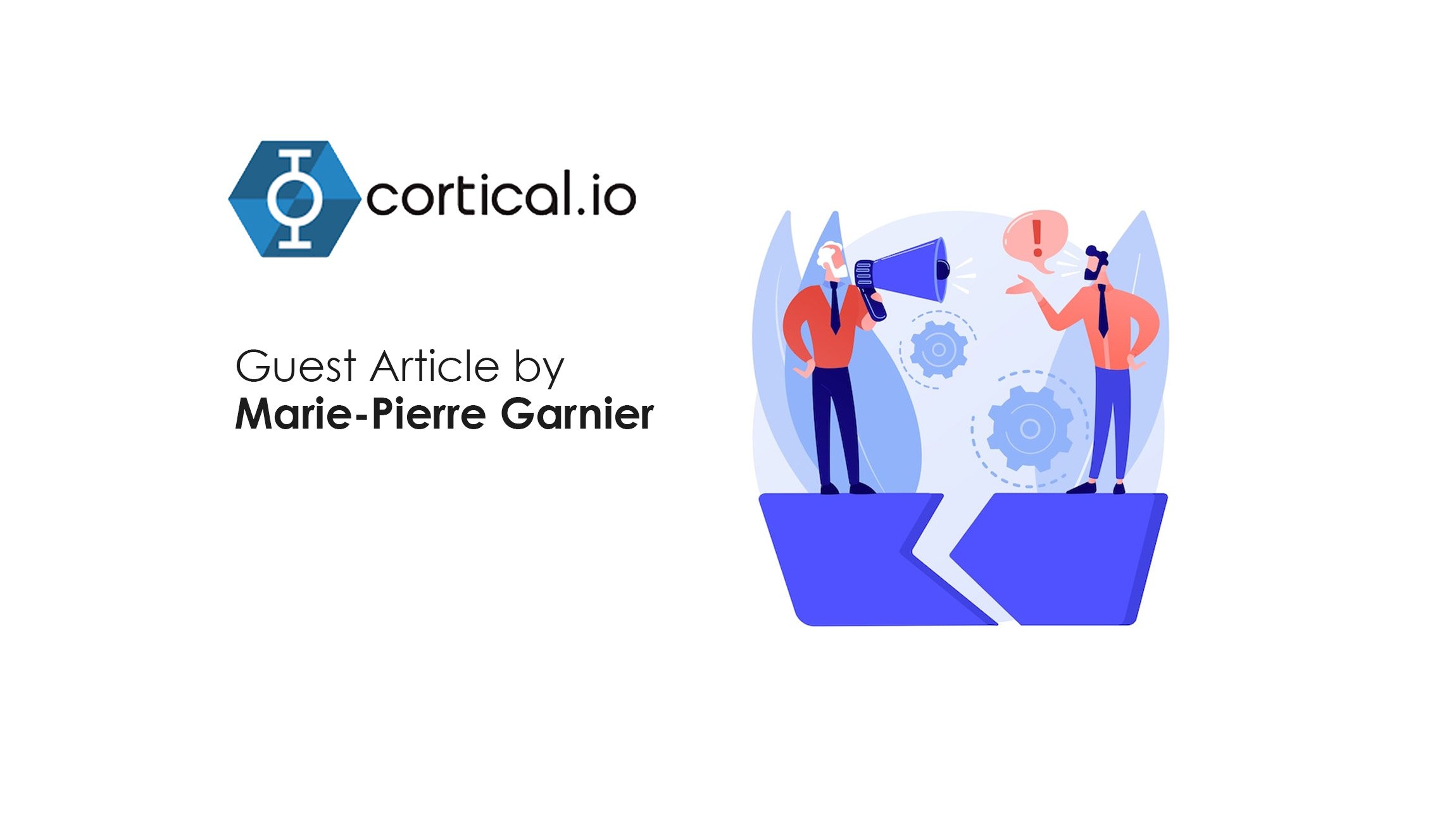A lot of insights about customer preferences are spread over the internet. This is a highly valuable, but largely untapped source of information that can help marketeers shape better products and better marketing messages.
Tracking customer behavior and making sense of the gigantic amounts of data collected is at the core of modern marketing; but raising concerns about data privacy and the approaching end of the cookie age – soon your browser will not support third-party cookies anymore – is making it more and more and more difficult to gather customer intelligence in traditional ways. On the other end, many consumers are extremely communicative in social media, user forums and e-commerce platforms. They share highly valuable information about their opinion about a product or their experience with a brand. However, these sources of information are not leveraged, or only partially, because of the sheer quantity of content to be analyzed and because of the type of content involved which prevents automation efforts: understanding the meaning of short, highly variable texts (which social media posts and customer reviews often are) and accurately deriving actionable insights from them is a big challenge for most text analytics tools.
Marketeers want more than sentiment analysis
Sentiment analysis is great to learn whether your customers are happy with your support center or your new product features. It can help quickly uncover problem zones or comfort the marketing team in their strategic direction. But to be truly actionable, you need more than just the knowledge that “65% of consumers feel positive about our new product”. What is it exactly that they like? Why? Which benefits do they get from your product? If you had access to this kind of knowledge, you could integrate it in your next marketing campaign and possibly address potential customers from an edge you have not yet envisioned.
Many brands try to leverage the information shared by customers online exactly for that purpose. In general, this means asking one team member to review manually some of the online customer contributions – the sheer content of customer feedback received by big brands in forms of social media post and product reviews makes it impossible to analyze all of it manually – unless you are willing to affect several FTEs to this task and load your budget with steep labor costs.
Structured versus unstructured content
In the age of robotic process automation and intelligent document processing, why can’t this task be automated so that marketeers can leverage information buried in online content at scale? The challenge can be summed up in two words: unstructured data. Automation tools excel at processing high volume of content, provided it is structured, meaning organized in an utterly standardized manner with simple information bits always to be found at the same place. Online forms with defined fields and text options to choose from are a perfect example of structured content which can be easily processed by automation tools. The problems begin when the form contains a free text field where customers can write whatever they want – this kind of semi-structured content can still be correctly processed because, generally, the company has access to thousands of examples that will help train the software. But 80% of the content to be found online is totally unstructured – posts in social media, product reviews in online shopping platforms, emails sent to customer service: this type of content is characterized by a total lack of structure and standardization and has proven a hard nut to crack for automation tools.
Marketing Technology News: Lytics Debuts Conductor to Empower Businesses to Unify and Activate Customer Data
Natural language understanding supercharges customer intelligence
Natural Language Understanding (NLU) is a set of artificial intelligence and machine learning techniques that goes beyond the statistical and keyword-based approaches used for sentiment analysis and text analytics tools. The most promising approaches use fine-grained, vector-based representations of words that store all senses and contexts and build systems that are capable of disambiguating sentences and correctly interpreting different formulations of the same idea. Many martech platforms take advantage of deep learning and neural networks to improve the performance of chatbots and virtual assistants, for example. Other NLU approaches like Cortical.io Semantic Folding open new horizons for social media listening, namely deriving actionable insights from online content at scale and with minimum human intervention, as the two following examples illustrate:
- An international cosmetics company recently partnered with Cortical.io to automate the analysis of customer reviews across several shopping platforms like Amazon and BazaarVoice, for 50+ brands worldwide and in more than 15 languages. The solution leverages Semantic Folding and other machine learning techniques to automatically detect the language of reviews, classify them and route them to the respective departments, as well as create a report for management feedback loop.
- A global biopharmaceutical company also turned to Cortical.io to develop a prototype capable of gathering intelligence about off-label drug usage by screening patient comments in user fora. The system was able to review more than 2 million Reddit posts in short time and classify on-label versus off-label usage with 92-100% accuracy.
The competitiveness of a brand is a direct measure of both its capacity to anticipate market changes and to adapt its positioning to new trends. Knowing what customers think is a holy grail that paradoxically seems less attainable in the age of ubiquitous digital presence. Too much information can be counterproductive if you don’t have the means to make sense of it. Fortunately, the latest developments in artificial intelligence and natural language understanding show that the flood of verbatim data can be tamed, paving the way for real-time, across channel customer intelligence.
Marketing Technology News: MarTech Interview with Mary Gilbert (Kerford), CMO at Folloze











